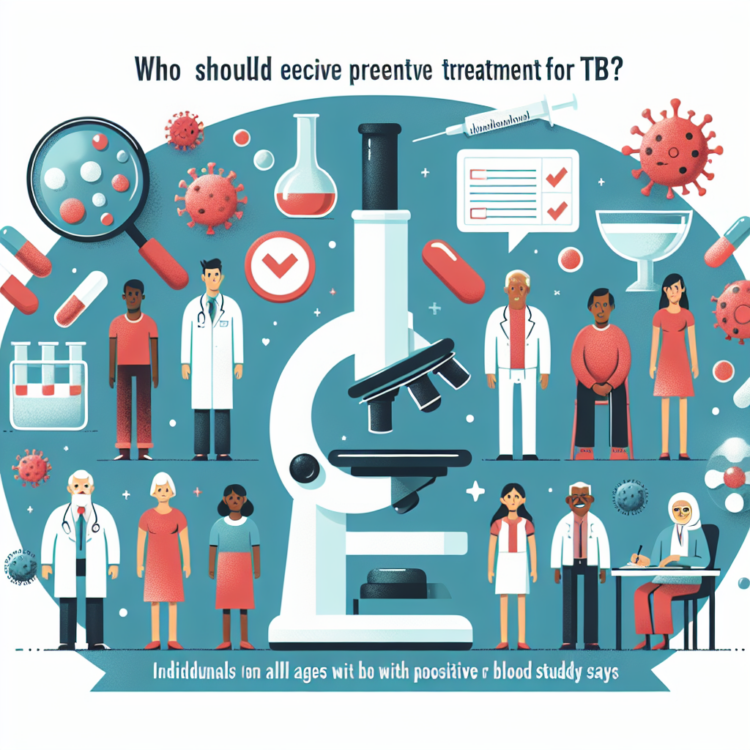EMBARGOED UNTIL 6:30 p.m. EST Wednesday, May 8, 2024
EMBARGOED UNTIL 6:30 p.m. EST Wednesday, May 8, 2024
Contact:
Jillian McKoy, jpmckoy@bu.edu
Michael Saunders, msaunder@bu.edu
##
Preventive treatment for tuberculosis (TB) can stop latent TB infections from developing into deadly TB disease. Despite TB infection being fully treatable, there is no global consensus as to which subgroups of individuals exposed to TB should be prioritized for preventive treatment, nor whether the benefits of this treatment vary based on factors such as age or confirmed infection.
A new study led by a Boston University School of Public Health (BUSPH) researcher provides clarity to this issue, finding that exposed individuals with confirmed TB infection—i.e. a positive skin or blood test—should receive priority treatment in settings with a low prevalence of the disease, regardless of their age.
However, in high-burden settings, all exposed individuals should be considered for preventative treatment, even without a confirmed infection, according to the findings published in The Lancet Respiratory Medicine.
This strategy can help end the tuberculosis epidemic and support global public health efforts to reduce TB mortality by 95 percent by 2035 (from 2015 estimates). In 2022, there were more than 10 million cases of active TB worldwide, resulting in 1.5 million deaths.
“Tuberculosis affects tens of millions of people every year and has long-term lasting effects, even after people recover,” says study lead and corresponding author Dr. Leonardo Martinez, assistant professor of epidemiology at BUSPH. “Finding ways to optimize prevention is really important to tackle the epidemic.”
For the study, Dr. Martinez and colleagues conducted a comprehensive review and analysis to identify new cases of TB among people who were in close contact with individuals diagnosed with the disease, and compared the effectiveness of preventive treatment in these exposed individuals based on age, infection status, and burden of TB in their settings.
Among 439,644 participants, the team found that preventive TB treatment was 49 percent effective among the 2,496 individuals who developed TB, but particularly among individuals with a positive skin or blood test (for which the effectiveness was 80 percent).
Notably, the researchers found that preventive TB treatment was not effective in most individuals who did not show evidence of infection, except for children under 5.
For those who did have a positive skin or blood test, the effectiveness of the treatment was comparable among individuals of all age groups—adults, children ages 5-17, and children under 5—and the treatment was more effective among individuals in high-burden settings than low-burden settings.
The team also estimated the number of individuals needed to receive treatment (NNT) in order to prevent one person from developing TB disease. Regardless of infection status, the NNT was lower in high-burden settings (29 to 43 people) versus low-burden settings (213 to 455 people). Despite the fact that individuals with negative blood or skin tests do not seem to benefit from preventive treatments, the researchers say the overall low NNT may justify prioritizing this treatment to all exposed contacts in areas where testing for TB infection is inaccessible.
“While it is critical to find and treat people who are spreading TB in the community, the threat of global TB will never end until people with latent TB receive treatment,” says study coauthor Dr. C. Robert Horsburgh, professor of global health. “The results of this study show just how effective such treatment can be.”
Journal
The Lancet Respiratory Medicine
Method of Research
Systematic review
Subject of Research
People
Article Title
Effectiveness of preventive treatment among different age groups and Mycobacterium tuberculosis infection status: a systematic review and individual-participant data meta- analysis of contact tracing studies
Article Publication Date
8-May-2024




